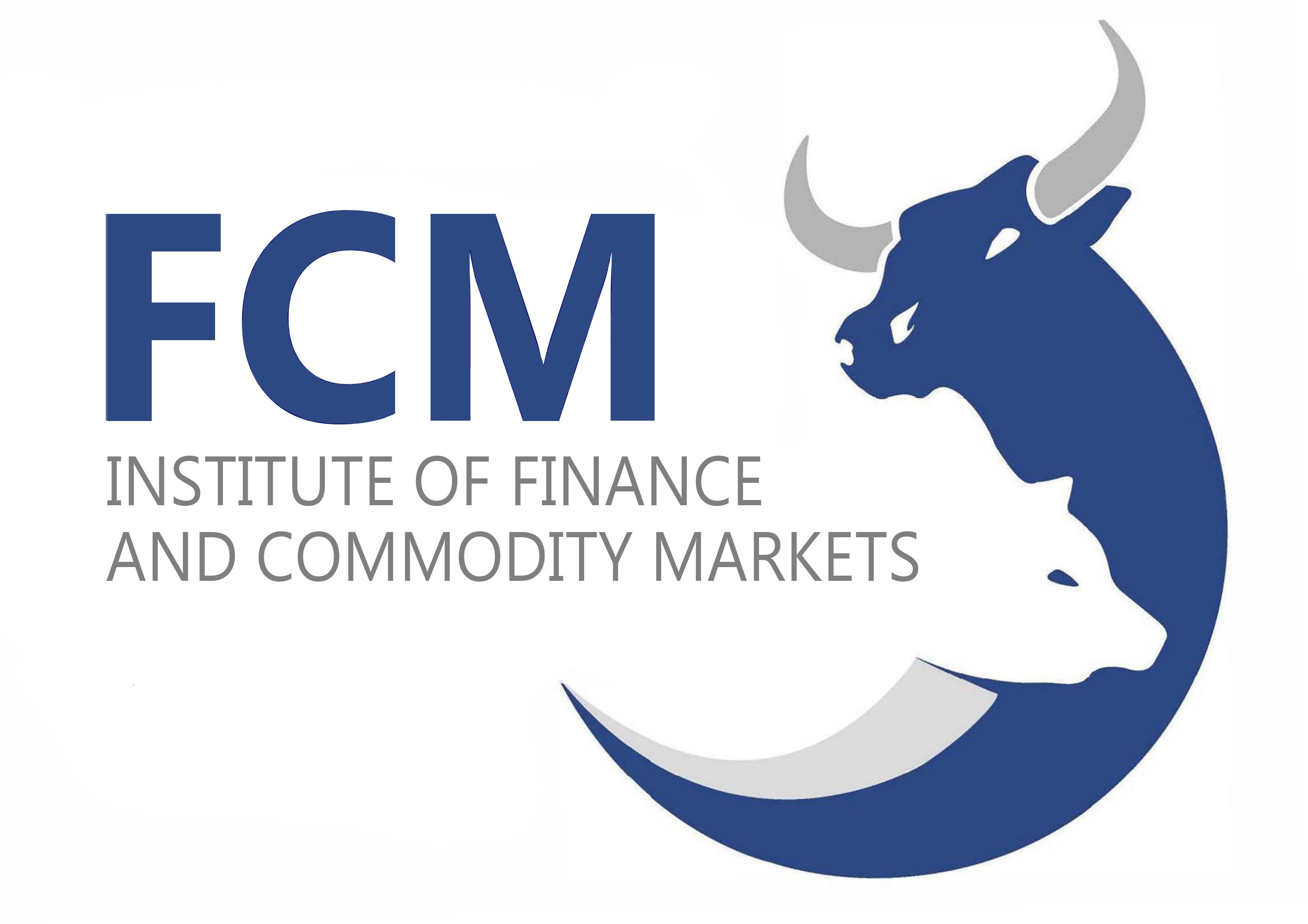Bachelorarbeiten
Sommersemester
Am ersten Mittwoch im Februar erfolgt die präferenzbasierte Themenvergabe, die Themen werden dafür Ende Januar vorgestellt. Sie müssen Ihre Bachelorarbeit bis Ende Februar anmelden.
Sie müssen spätestens am 30. April mit Ihrer Bachelorarbeit beginnen, sollten Sie Ihre Bachelorarbeit im März oder April anmelden wollen, so können Sie aus den übrig gebliebenen Themen wählen (First-Come-First-Serve Prinzip).
Im Dezember und Januar eines jeden Jahres ist keine Anmeldung möglich.
Wintersemester
Am ersten Mittwoch im Juli erfolgt die präferenzbasierte Themenvergabe, die Themen werden dafür Ende Juni vorgestellt. Sie müssen Ihre Bachelorarbeit dann bis Ende Juli anmelden.
Sie müssen spätestens am 30. November mit Ihrer Bachelorarbeit beginnen, sollten Sie zwischen August und November Ihre Bachelorarbeit anmelden wollen, so können Sie aus den übrig gebliebenen Themen wählen (First-Come-First-Serve Prinzip).
Im Mai und Juni eines jeden Jahres ist keine Anmeldung möglich.
Falls Sie Interesse haben eine Bachelorarbeit an unserem Institut zu schreiben, schicken Sie bitte eine nummerierte Liste mit mindestens fünf Themenpräferenzen an Herrn Kowalke.
| Monat | Anmeldung | Start bis spätestens |
Januar | nicht möglich | nicht möglich |
| Februar | Präferenzbasiert | 30. April |
| März | First Come, First Serve | 30. April |
| April | First Come, First Serve | 30. April |
| Mai | nicht möglich | nicht möglich |
| Juni | nicht möglich | nicht möglich |
| Juli | Präferenzbasiert | 30. November |
| August | First Come, First Serve | 30. November |
| September | First Come, First Serve | 30. November |
| Oktober | First Come, First Serve | 30. November |
| November | First Come, First Serve | 30. November |
| Dezember | nicht möglich | nicht möglich |
Online Einreichung
Falls Sie Ihre Arbeit online bei dem Studiendekanat einreichen, setzen Sie bitte Ihre Betreuerin oder Ihren Betreuer in Cc.
Themenvorschläge Bachelorarbeiten
Bachelorarbeiten Bereich Kapitalmärkte und Investments
-
Testing the Arbitrage Pricing Theory
Aufgabe:
- Ross (1976) hat die Abitrage Pricing Theory (APT) als generelle Theorie zur Bepreisung von Assets entwickelt. Die Basis der Theorie ist no-arbitrage. Chen et al. (1986) untersuchen die APT empirisch.
- Übersicht der Literatur zum APT.
- Empirische Evaluation des APT mit einem europäischem Datensatz.
Basisliteratur:
- Chen, N.-F., Roll, R., & Ross, S. A. (1986). Economic Forces and the Stock Market. Journal of Business, 59(3), 383-403
Leitung und Ansprechpartner der Abschlussarbeit
-
Multi-Factor Models
Aufgabe:
- Aufgrund des empirischen Versagens des CAPM haben verschiedene Wissenschaftler alternative Faktormodelle entwickelt.
- Empirische Betrachtung des deutschen Marktes auf der Basis des Fama-French 3-Factor Modells und des Carhart 4-Factor Modells.
- Berechnen Sie die Faktoren selbst und testen Sie mithilfe eines GRS Tests, ob die Modelle die Asset Preise erklären können.
Basisliteratur:
- Carhart, M. M. (1997). On Persistence in Mutual Fund Performance. Journal of Finance, 52(1), 57-82 .
- Fama, E. F., & French, K. R. (1993). Common Risk Factors in the Returns on Stocks and Bonds. Journal of Financial Economics, 33(1), 3–56.
- Gibbons, M. R., Ross, S. A., & Shanken, J. (1989). A test of the efficiency of a given portfolio. Econometrica: Journal of the Econometric Society, 1121-1152.
Leitung und Ansprechpartnerin der Abschlussarbeit
-
The Conditional CAPM
Aufgabe:
- Die statische Version des Capital Asset Pricing Models (CAPM) versagt bei der Erklärung von Differenzen im Querschnitt des Aktienmarktes. Ein möglicher Grund dafür könnte allerdings die Zeitvariation von Beta-Faktoren sein.
- Theoretische Beschreibung von verschiedenen Versionen des Conditional CAPM.
- Empirische Evaluation des Conditional CAPM mit Hilfe eines europäischen Datensatzes.
Basisliteratur:- Jagannathan, R., & Wang, Z. (1996). The conditional CAPM and the cross‐section of expected returns. Journal of Finance, 51(1), 3-53.
- Lewellen, J., & Nagel, S. (2006). The conditional CAPM does not explain asset-pricing anomalies. Journal of Financial Economics, 82(2), 289-314.
Leitung und Ansprechpartner der Abschlussarbeit
-
Beta Estimation with Prior Information
Beschreibung:
- Prior Informationen können nützlich sein, um den Messfehler von Beta Schätzern zu reduzieren. Es gibt verschiedene Möglichkeiten, wie man die Prior Information nutzen kann. Es kann entweder von dem gesamten Querschnittsverteilung entnommen werden, oder einer Teilmenge von Unternehmen mit ähnlichen Charakteristika.
- Empirische Untersuchung der Performance von Betas, geschätzt mit Prior Informationen.
Basisliteratur:
- Karolyi, G. A. (1992). Predicting risk: Some new generalizations. Management Science, 38(1), 57-74.
- Vasicek, O. A. (1973). A Note on Using Cross‐sectional Information in Bayesian Estimation of Security Betas. Journal of Finance, 28(5), 1233-1239.
Leitung und Ansprechpartner der Abschlussarbeit
-
The Fama MacBeth Test of the CAPM
Beschreibung:
- Das Sharpe-Lintner-Mossin-Treynor CAPM ist eines der erfolgreichsten und am weitesten verbreiteten Finanzmodelle überhaupt.
- Erläutern Sie die Annahmen, die kurze Herleitung, die Intuition und die(überprüfbaren) Implikationen des CAPM.
- Fama und MacBeth (1973) entwickeln ein Testverfahren, das einfach und so flexibel ist, dass es in der Finanzforschung weit verbreitet ist.
- Erläutern Sie das Verfahren und führen Sie einen Test des CAPM nach Fama und MacBeth (1973) durch.
Basisliteratur:
- Fama, E. F., & MacBeth, J. D. (1973). Risk, return, and equilibrium: Empirical tests. Journal of political economy, 81(3), 607-636
Leitung und Ansprechpartner der Abschlussarbeit
-
Comparing Cross-Section and Time-Series Factor Models
Beschreibung:
- Die Querschnittsregression von Fama und Macbeth (1973) ist eine bekannte Methode zur Ermittlung der Abhängigkeit zwischen durchschnittlichen Renditen und Vermögenseigenschaften. Sie dient als Hauptmotivation für bekannte Faktormodelle in der Zeitreihenbewertung von Vermögenswerten. Fama und French (2020) schlagen jedoch eine verbesserte Version der Methodik von Fama und MacBeth (1973) vor.
- Sie schlagen vor, die bewährten Zeitreihenfaktoren durch Querschnittsfaktoren zu ersetzen. Ihre Untersuchungen zeigen, dass Querschnittsfaktoren die Variation der Renditen in Zeitreihentests besser erfassen als traditionelle, auf Merkmalen basierende Zeitreihenfaktoren.
- Führen Sie einen Literaturüberblick über den empirischen Ansatz und die Bewertung von Faktor-Modellen zur Preisbildung von Vermögenswerten durch.
- Empirische Untersuchung und Vergleich prominenter Faktormodelle unter Verwendung von Zeitreihen- und Querschnittsfaktoren, um ihre Fähigkeit zur Preisbildung bei bekannten Anomalien in der Vermögensbewertung zu bewerten.
Basisliteratur:
-
Fama, E. F., and K. R. French. (2020). Comparing cross-section and time-series factor models. The Review of Financial Studies 33(5), 1891-1926.
-
Fama, E. F., and J. D. MacBeth. (1973). Risk, return, and equilibrium: empirical tests. Journal of Political Economy 81, 607–36.
-
Fama, E. F., and K. R. French. (2015). A five-factor asset pricing model. Journal of Financial Economics 116, 1–22.
Leitung und Ansprechpartner der Abschlussarbeit
-
Infrequent Trading and Beta Estimation
Beschreibung:
- Wenn Aktien unregelmäßig gehandelt werden, dann sind geschätzte Betas negativ verzerrt. Scholes and Williams (1977) und Dimson (1979) schlagen Wege vor, um diesen Fehler zu korrigieren.
- Empirische Untersuchung der Performance von Betas, die für Infrequent Trading korrigiert sind, mit der Methode von McInish et al. (1986) für den deutschen Aktienmarkt.
Basisliteratur:
- Dimson, E. (1979). Risk measurement when shares are subject to infrequent trading. Journal of Financial Economics, 7(2), 197-226.
- McInish, T. H., & Wood, R. A. (1986). Adjusting for beta bias: An assessment of alternate techniques: A note. Journal of Finance, 41(1), 277-286.
- Scholes, M., & Williams, J. (1977). Estimating betas from nonsynchronous data. Journal of Financial Economics, 5(3), 309-327.
Leitung und Ansprechpartner der Abschlussarbeit
-
Idiosyncratic Volatility
Aufgabe:
- Nach der klassischen Theorie kann idiosynkratische Volatilität vollständig diversifiziert werden, dementsprechend sollte diese nicht im Markt bepreist werden. Allerdings zeigen Ang et al. (2006), dass idiosynkratische Volatilität einen stark negativen Preis hat. Dies wird auch das “idiosyncratic volatility puzzle” genannt.
- Übersicht über die Literatur zu idiosynkratischer Volatilität.
- Empirische Evaluation des “idiosyncratic volatility puzzle” mit Hilfe eines europäischem Datensatzes.
Basisliteratur:
- Ang, A., Hodrick, R. J., Xing, Y., & Zhang, X. (2006). The cross‐section of volatility and expected returns. Journal of Finance, 61(1), 259-299.
- Ang, A., Hodrick, R. J., Xing, Y., & Zhang, X. (2009). High idiosyncratic volatility and low returns: International and further US evidence. Journal of Financial Economics, 91(1), 1-23.
- Bali, T. G., & Cakici, N. (2008). Idiosyncratic volatility and the cross section of expected returns. Journal of Financial and Quantitative Analysis, 43(01), 29-58.
Leitung und Ansprechpartner der Abschlussarbeit
-
Betting Against Beta
Aufgabe:
- Eine populäre Erklärung für das Versagen des klassischen CAPM sind so gennannte "leverage-constraints". Weil Leverage limitiert ist, müssen Investoren Aktien mit hohem Beta kaufen, um das Risiko in ihrem Portfolio zu erhöhen. Eine hohe Nachfrage nach diesen Aktien führt dazu, dass diese negative Alphas haben und die empirische Wertpapierlinie zu flach ist, im Vergleich mit Vorhersagen die vom CAPM getroffen werden.
- Theoretische Untersuchung von "leverage-constraints".
- Empirische Untersuchung der Performance einer betting-against-beta Strategie.
Basisliteratur:
- Black, F. (1972). Capital market equilibrium with restricted borrowing. Journal of Business, 45(3), 444-455.
- Frazzini, A., & Pedersen, L. H. (2014). Betting against beta. Journal of Financial Economics, 111(1), 1-25.
Leitung und Ansprechpartnerin der Abschlussarbeit
-
Liquidity Risk
Aufgabe:
- Bei illiquiden Aktien kann das Handeln einer großen Position den Marktpreis verändern. Wenn Investoren diese illiquiden Aktien halten und diese liquidieren müssen, kann dies substantielle Kosten verursachen. Deshalb benötigen Investoren möglicherweise einen Risikoaufschlag, damit sie bereit sind, diese illiquiden Aktien zu halten.
- Theoretische Beschreibung, wie Liquidität Asset Preise beeinflusst.
- Empirische Evaluation des Liquiditätsrisikos für einen europäischen Datensatz.
Basisliteratur:
- Amihud, Y. (2002). Illiquidity and stock returns: cross-section and time-series effects. Journal of Financial Markets, 5(1), 31-56.
- Pastor, L., & Stambaugh, R. F. (2001). Liquidity risk and expected stock returns. Journal of Political Economy, 111, 642-685.
Leitung und Ansprechpartner der Abschlussarbeit
-
The Momentum Anomaly
Aufgabe:
- Die Momentumanomalie beschreibt folgendes Muster, in einem Zeitraum zwischen 6 Monaten und 1 Jahr, bleiben "Verlierer" im Mittel "Verlierer" und "Gewinner" steigen weiter im Preis.
- Erstellen Sie einen Überblick über die theoretische und empirische Literatur zu der Momentum Anomalie.
- Untersuchen Sie den Momentum Effekt empirisch, mittels Regressionen und Portfolio sorts.
Basisliteratur:
- Goyal, A., & Jegadeesh, N. (2017). Cross-Sectional and Time-Series Tests of Return Predictability: What Is the Difference? Review of Financial Studies, 31(5), 1784-1824.
- Jegadeesh, N., & Titman, S. (1993). Returns to buying winners and selling losers: Implications for stock market efficiency. Journal of Finance, 48(1), 65-91.
Leitung und Ansprechpartner der Abschlussarbeit
-
Short-term Reversal
Aufgabe:
- Im Aktienmarkt scheinen monatliche Aktienreturns negative autokorreliert zu sein. Man sieht einen "short-term reversal" Effekt in Aktienkursen.
- Fassen Sie die empirische und theoretische Literatur in Bezug auf den short-term reversal Effekt zusammen.
- Untersuchen Sie diesen Effekt empirisch mittels Portfolio sorts und Regressionen.
Basisliteratur:
- Jegadeesh, N. (1990). Evidence of predictable behavior of security returns. Journal of Finance, 45(3), 881-898.
Leitung und Ansprechpartner der Abschlussarbeit
-
The Value Anomaly
Aufgabe:
- In internationalen Aktienmärkten ist ein gut beschriebenes Phänomen, dass Aktien mit einen hohem Buch-zu-Marktwert (“value stocks”) die Aktien mit niedrigem Buch-zu-Marktwert (“growth stocks”) outperformen.
- Fassen Sie die theoretische und empirische Literatur zum Value Effekt zusammen.
- Untersuchen Sie empirisch die Value Strategie anhand von Portfolio sorts und Regressionen.
Basisliteratur:
- Asness, C. S., Moskowitz, T. J., & Pedersen, L. H. (2013). Value and momentum everywhere. Journal of Finance, 68(3), 929-985.
- Fama, E. F., & French, K. R. (1992). The cross‐section of expected stock returns. Journal of Finance, 47(2), 427-465.
Leitung und Ansprechpartner der Abschlussarbeit
-
Taming the Factor Zoo with Machine Learing
Beschreibung:
- Da die Asset Pricing Literatur immer mehr Faktoren hervorbringt, besteht eine grundlegende Aufgabe darin, zu bestimmen, welche Faktoren für die Preisbildung wirklich relevant sind und wie zu beurteilen ist, ob ein neuer Faktor im Vergleich zu den Hunderten, bereits vorhandenen, Faktoren zusätzliche Erklärungskraft für die Preisbildung von Vermögenswerten hat.
- Eine Lösung für dieses Problem ist die Anwendung von Techniken des maschinellen Lernens, die mit der hochdimensionalen Natur dieses Problems umgehen können.
- Erstellen Sie einen Literaturüberblick über die Anwendung von Techniken des maschinellen Lernens auf Faktormodelle und darüber, wie maschinelles Lernen die Faktorauswahl disziplinieren kann.
- Systematische Bewertung bestehender Faktoren hinsichtlich ihrer Erklärungskraft für die Preisbildung von Vermögenswerten unter Verwendung von Techniken des maschinellen Lernens.
Basisliteratur:
- Feng, G., Giglio, S., & Xiu, D. (2020). Taming the Factor Zoo: A Test of New Factors. The Journal of Finance, 75(3), 1327-1370.
- Gu, S., Kelly, B., & Xiu, D. (2020). „Empirical Asset Pricing via Machine Learning“ The Review of Financial Studies 33(5): 2223–73.
- Gu, S., Kelly, B., & Xiu, D. (2021). „Autoencoder Asset Pricing Models“. Journal of Econometrics 222(1): 429–50.
Leitung und Ansprechpartner der Abschlussarbeit
-
Which Machine Learning Method for Asset Pricing?
Beschreibung:
- Die jüngste Asset Pricing Literatur, die maschinelle Lernverfahren für Renditeprognosen einsetzt, zeigt deutliche Verbesserungen im Vergleich zu führenden regressionsbasierten Methoden. Es gibt jedoch zahlreiche maschinelle Lerntechniken für diesen Zweck, so dass sich die Frage stellt, welche Methode zu verwenden ist.
- Führen Sie eine Literaturrecherche über Anwendung von Techniken des maschinellen Lernens zur Vorhersage von Renditen durch.
- Empirische Analyse und Vergleich der Leistung verschiedener Algorithmen des maschinellen Lernens bei der Vorhersage von Renditen.
Basisliteratur:
-
Gu, Shihao, Bryan Kelly, und Dacheng Xiu. (2020). „Empirical Asset Pricing via Machine Learning“ The Review of Financial Studies 33(5): 2223–73.
-
Gu, Shihao, Bryan Kelly, und Dacheng Xiu. (2021). „Autoencoder Asset Pricing Models“. Journal of Econometrics 222(1): 429–50.
Leitung und Ansprechpartner der Abschlussarbeit
-
Technical Analysis: Price-based Indicators
Aufgabe:
- In den letzten hundert Jahren wurde die technische Analayse (TA) dafür genutzt, um zukünftige Preisbewegungen vorherzusagen. Die TA repräsentiert eine Alternative zu der Fundamentalanalyse. Beide Methoden widersprechen der bekannten‚ Efficient Market Hypothesis‘ (Fama, 1972), aber führen möglicherweise zu profitablen Handelsstrategien.
- Das Ziel ist es die TA insbesondere in Bezug auf Preis basierten Indikatoren einzuführen.
- Außerdem ist es das Ziel Strategien zu entwickeln und empirisch zu evaluieren, die auf Aktienindikatoren basieren.
Basisliteratur:
- Bodie, Z., Kane, A., & Marcus, A. J. (2014). Investments. 10th Ed., McGraw-Hill: New York.
- Chen, J. (2010). Essentials of Technical Analysis for Financial Markets. John Wiley & Sons: New Jersey.
Leitung und Ansprechpartner der Abschlussarbeit
-
Mutual Fund Performance
Aufgabe:
- Zusammenfassung der Literatur bezüglich mutual fund performance.
- Empirische Untersuchung der Profitabilität von aktiv gemanagten Fonds verglichen mit Indexfonds/passiv gemanagten Fonds.
Basisliteratur:
- Fortin, R., & Michelson, S. (2002). Indexing versus active mutual fund management. Journal of Financial Planning, 15(9), 82-95.
- Sharpe, W. F. (1991). The arithmetic of active management. Financial Analysts Journal, 47(1), 7-9.
- Sharpe, W. F. (1992). Asset allocation: Management style and performance measurement. Journal of Portfolio Management, 18(2), 7-19.
- Goetzmann, W., Ingersoll, J., & Spiegel, M. (2007). Portfolio Performance Manipulation and Manipulation-proof Performance Measures. Review of Financial Studies, 20(5), 1503-1546.
Leitung und Ansprechpartner der Abschlussarbeit
-
The Performance of Sharia-Compliant Funds
Aufgabe:
- Während der letzten Jahre hat sich die Nachfrage nach Finanzprodukten, die bestimmten ethischen Standards entsprechen erhöht. Zum Beispiel gibt es bestimmte Produkte und Fonds, die Strategien Befolgen, die dem islamischen Glauben entsprechen. Typischerweise schließen solche Fonds bestimmte Produkte und Sektoren aus, was möglicherweise die Vorteile von Diversifikation verringert.
- Theoretische Grundlagen und Bedingungen für Sharia Konforme Produkte.
- Empirische Evaluation von mutual funds, die Sharia Konform sind vs. gewöhnliche Fonds.
Basisliteratur:
- Zaher, T. S., & Kabir Hassan, M. (2001). A comparative literature survey of Islamic finance and banking. Financial Markets, Institutions & Instruments, 10(4), 155-199.
- Derigs, U., & Marzban, S. (2008). Review and analysis of current Shariah-compliant equity screening practices. International Journal of Islamic and Middle Eastern Finance and Management, 1(4), 285-303.
- Sadeghi, M. (2008). Financial performance of Shariah-compliant investment: evidence from Malaysian stock market. International Research Journal of Finance and Economics, 20, 15-26.
Leitung und Ansprechpartner der Abschlussarbeit
-
The Asset Class of Cryptocurrencies
Aufgabe:
- Cryptocurrencies haben in den vergangenen Jahren enorm an Bedeutung in den Kapitalmärkten gewonnen, beispielsweise durch die Auflegung eines ETF.
- Erstellen Sie eine Übersicht über die Literatur zu Cryptocurrencies.
- Stellen Sie die empirischen Fakten dieser Assets dar und untersuchen Sie, welcher Assetklasse diese angehören und welche Faktoren die Presbildung beeinflussen.
Basic Literature:- Liu, Y., & Tsyvinski, A. (2020). Risks and Returns of Cryptocurrency. Review of Financial Studies, forthcoming.
Leitung und Ansprechpartnerin der Abschlussarbeit
-
Real Estate Asset Pricing
Beschreibung:
- REITS sind börsengehandelte Immobilienfonds.
- Van Nieuwerburgh (2019) charakterisiert sie mit Hilfe von Standard-Asset-Pricing-Faktor-Modellen.
- Im Ergebnis wird festgestellt, dass sich REITS wie kleine Value-Aktien verhalten.
- Berechnen Sie das bedingte Exposure und bedingte Alpha mit Hilfe rollierender Regressionen.
Basisliteratur:
-
Van Nieuwerburgh, S. (2019). Why are REITs currently so expensive?. Real Estate Economics, 47(1), 18-65.
Leitung und Ansprechpartner der Abschlussarbeit
-
Risk Premia across Inflation Regimes
Beschreibung:
- Inflation kann durch verschiedene Wirkungskanäle einen Einfluss auf die Renditen verschiedener Anlagen haben. Es ist möglich, entweder das Inflationsrisiko einer Anlage zu betrachten oder die Veränderung anderer Risikoprämien in Abhängigkeit von der Inflation zu analysieren, um Rückschlüsse auf erwartete Renditen zu ziehen.
- Analysieren Sie für ausgewählte Anlageklassen die Performance über unterschiedliche Inflationsregimes. Berücksichtigen Sie dabei die Veränderung von Risikoprämien.
Basisliteratur:
- Boons, M., Duarte, F., De Roon, F., & Szymanowska, M. (2020). Time-varying inflation risk and stock returns. Journal of Financial Economics, 136(2), 444-470.
Leitung und Ansprechpartner der Abschlussarbeit
-
Economic Tracking Portfolios
Aufgabe:
- Auf den Märkten spiegeln Preise Informationen und Erwartungen wider, einschließlich makroökonomischer Variablen.
Breeden schlägt vor, ein Portfolio zu verwenden, das den Konsum abbildet, um das CCAPM zu testen.
- Lamont (2001) greift die Idee auf, makroökonomische Variablen über ökonomische Tracking-Portfolios zu prognostizieren, d.h. Portfolios von Vermögenswerten, deren Renditen eine ökonomische Variable verfolgen.
Erstellen Sie Tracking-Portfolios und somit Prognosen für bspw. europäische Makro-Variablen.
Basis Literatur:- Lamont, O. A. (2001). Economic tracking portfolios. Journal of Econometrics, 105(1), 161-184.
Leitung und Ansprechpartner der Abschlussarbeit
Bachelorarbeiten im Bereich Derivatives and Risk Management
-
Valut-at Risk - Backtesting
Aufgabe:
- Der Value at Risk (VaR) misst das Risiko von Investitionen und den potentiallen Verlust über eine bestimmte Periode. Der Schätzer basiert auf verschiedenen Annahmen und Methoden beispielsweise den historischen VaR, den parametrischen VaR und Mote Carlo Simulationen.
- Während jede Methode Vor-und Nachteile hat, stellt sich die Frage, welche man für Unternehmen nutzen sollte. Die Evaluation eines VaR Modells wird typischerweise mittels eines Backtests vollzogen.
- Empirische Untersuchung und Vergleich von verschiedenen Schätzmethoden, mit Backtesting als Hilfsmittel.
Basisliteratur:
- Hull, J. C., (2011). Options, Futures, and Other Derivatives. 8th ed., Prentice Hall.
- Christoffersen, P. F. (2012). Elements of financial risk management. 2nd ed., Academic Press.
- Jorion, P. (2001). Value at Risk. McGraw-Hill.
Leitung und Ansprechpartner der Abschlussarbeit
-
Duration and Convexity Hedging
Aufgabe:
- Beschreiben Sie die Konzepte von Duration und Convexity.
- Erstellen Sie ein Anleiheportfolio, dass immuniziert ist gegen Änderung in dem Zins, mittels der Messgrößen Duration and Convexity.
- Evaluieren Sie die Performance dieser Methode basierend auf Simulationen und empirischer Analyse.
Basisliteratur:
- Chambers, D.R., Carleton, W. T. & McEnally, R. W. (1988). Immunizing Default-Free Bond Portfolios with a Duration Vector. The Journal of Financial and Quantitative Analysis, 23(1), 89-104.
- Bierwag, G.O., Fooladi, I. & Roberts, G. S. (1993). Designing an immunized portfolio: IS M-squared the key? Journal of Banking and Finance, 17(1), 1147-1170.
Leitung und Ansprechpartnerin der Abschlussarbeit
-
Currency Carry Trades
Aufgabe:
- Der Currency Carry Faktor basiert auf der Idee in Hochzinsländer zu investieren und das Geld dafür in Niedrigzinsländern zu leihen. Eine solche Strategien kann auf Makroökonomische Unterschiede zurückgeführt werden, die man ausnutzen kann.
- Untersuchen Sie die Strategie mit unterschiedlichen vorhersagenden Variablen.
Basisliteratur:
- Bakshi, G. and Panayotov, P. (2013). Predictability of currency carry trades and asset pricing implications. Journal of Financial Economics, 17(1), 139-163.
Leitung und Ansprechpartner der Abschlussarbeit
-
Commodity Carry
Aufgabe:
- Die Theorie der "normalen" Backwardation sagt, dass die Zeitstruktur von Rohstofffutures die Risikoprämie bestimmen soll. Eine Commodity Carry Strategie nutzt dies aus und investiert in langlaufende Futures und verkauft kurzlaufende Futures leer. Das Carry Konzept hat seine Wurzeln in dem Währungsmarkt und wurde in mehrere Märkte transformiert.
- Berechnen Sie die Renditen von Commodity Carry Strategien nach Koijen et al. (2018).
Basisliteratur:
- Gorton, G. B., Hayashi, F., & Rouwenhorst, K. G. (2012). The fundamentals of commodity futures returns. Review of Finance, 17(1), 35-105.
- Koijen, R. S.J., Moskowitz, T. J., Pedersen, L. H., & Vrugt, E. B. (2018). Carry. Journal of Financial Economics, 127(2), 197-225.
Leitung und Ansprechpartner der Abschlussarbeit
-
Expectations Hypothesis Tests
Aufgabe:
- Was bestimmt die Unterschiede zwischen kurz-und langlaufenden yields? Nach der Expectations Hypothesis beinhaltet der Spread wichtige Informationen über die Markterwartung zu zukünftigen Zinsentwicklungen.
- Theoretische Beschreibung der Expectations Hypothesis für Zinsen und empirische Untersuchung ihrer Validität.
Basisliteratur:
- Campbell, J. Y., & Shiller, R. J. (1991). Yield spreads and interest rate movements: A bird's eye view. Review of Economic Studies, 58(3), 495-514.
- Fama, E. F. (1984). The information in the term structure. Journal of Financial Economics, 13(4), 509-528.
Leitung und Ansprechpartner der Abschlussarbeit
-
Volatility Modeling
Aufgabe:
- Die Volatilität von verschiedenen Asset Returns verändert sich über die Zeit. Volatilitäts clustering beschreibt ein Phänomen, welches beschreibt, dass Perioden hoher und niedriger Volatilität für gewöhnlich getrennt voneinander auftreten.
- Das Modellieren von Volatilitäten spielt eine besondere Rolle im Risikomanagement, aber auch für Asset Allokationen und das Bepreisen von Derivaten.
- GARCH Modelle von Engle (1982) und Bollerslev (1986) sind speziell geeignet, um Volatilitäts Clustering zu modellieren.
- Vergleichen Sie Modelle der GARCH Familie empirisch, insbesondere basierend auf deren Vorhersagekraft.
Basisliteratur:
- Engle, R. F. (1982). Autoregressive conditional heteroscedasticity with estimates of the variance of United Kingdom inflation. Econometrica, 987-1007.
- Bollerslev, T. (1986). Generalized autoregressive conditional heteroskedasticity. Journal of Econometrics, 31(3), 307-327.
- Alexander, C. (2008): Market risk analysis, Volume II: Practical financial econometrics.
Leitung und Ansprechpartner der Abschlussarbeit
-
Intraday Volatility Pattern
Aufgabe:
- Theoretisch sollte die Volatilität von Aktien durch Nachrichten verursacht werden, weil eine Änderung des Preises die Verarbeitung von Informationen in Märkten signalisiert. Aber die Volatilität wird nicht komplett von Nachrichten erklärt. Die Entwicklung innerhalb eines Tages hat eine hohe Erklärkraft.
- Untersuchen Sie empirisch die Muster von Volatilitäten innerhalb eines Tages.
Basisliteratur:
- Andersen, T. G., & Bollerslev, T. (1997). Intraday periodicity and volatility persistence in financial markets. Journal of Empirical Finance, 4(2), 115-158.
- Andersen, T. G., & Bollerslev, T. (1998). Deutsche mark–dollar volatility: Intraday activity patterns, macroeconomic announcements, and longer run dependencies. Journal of Finance, 53(1), 219-265.
Leitung und Ansprechpartner der Abschlussarbeit
-
The Variance Risk Premium
Aufgabe:
- Typischerweise ist der Preis eines Variance Swaps - der Differenz zwischen physischer und risikoneutraler Erwartung der künftigen Varianz - negativ für den Aktienmarkt. Ein negativer Preis für einen Varianzswap impliziert, dass Investoren bereit sind eine Riskoprämie dafür zu zahlen, um sich gegen zukünftige Erhöhungen der Varianz abzusichern.
- Theoretische Beschreibung der Varianzrisikoprämie. Diskutieren Sie potentielle Quellen und Interpretationen.
- Empirische Schätzung der Varianzrisikoprämie.
Basisliteratur:
- Carr, P., & Wu, L. (2009). Variance risk premiums. Review of Financial Studies, 22(3), 1311-1341.
- Prokopczuk, M., & Wese Simen, C. (2014). Variance risk premia in commodity markets. Variance Risk Premia in Commodity Markets, Working Paper.
Leitung und Ansprechpartner der Abschlussarbeit
-
Tail Dependence
Aufgabe:
- Tail dependence beschreibt die Abhängigkeitsstruktur zwischen Aktien während Extremereignissen. Diese Abhängigkeit ist unterschiedlich von der Abhängigkeit während normaler Marktphasen.
- Schätzen Sie empirisch die tail dependence von Aktienmärkten.
Basisliteratur:
- Van Oordt, M. R., & Zhou, C. (2012). The simple econometrics of tail dependence. Economics Letters, 116(3), 371-373.
- Hull, J. C., (2011). Options, Futures, and Other Derivatives. 8th ed., Prentice Hall.
Leitung und Ansprechpartner der Abschlussarbeit
-
American Options and the Early Exercise Premium
Aufgabe:
- Anders als für europäische Optionen existiert keine geschlossene Lösung für die Preise von amerikanischen Optionen. Es lässt sich mit Hilfe von no-arbitrage Regeln bestimmen, dass der Wert von amerikanischen Optionen mindestens so hoch sein muss, wie von europäischen Optionen. Barone-Adesi & Whaley (1987) zerlegen den Wert einer amerikanischen Option in den einer europäischen Option und ein early exercise premium.
- Beschreiben Sie verschiedene Bewertungsmethoden für amerkanische Optionen.
- Bewerten Sie amerikanische Optionen empirisch und schätzen Sie das early exercise premium.
Basisliteratur:
- Barone-Adesi, G., & Whaley, R. E. (1987). Efficient analytic approximation of American option values. Journal of Finance, 42(2), 301-320.
Leitung und Ansprechpartnerin der Abschlussarbeit
-
Simulation-based Estimation of Exotic Option Greeks
Beschreibung:
- Neben Europäischen und Amerikanischen Optionen gibt es noch viele weitere, sogenannte exotische Optionen. Für die Berechnung der Greeks von diesen Optionen gibt es keine geschlossene Formel.
- Simulieren Sie die Auszahlung von exotischen Optionen.
- Berechnen Sie die Greeks für exotischen Optionen.
Basisliteratur:
- Glasserman, R. (2004). Monte Carlo methods in financial engineering, volume 53. Springer.
- Hull, J. (2015). Options, futures, and other derivatives. In Always learning (9th edition). Pearson.
Leitung und Ansprechpartnerin der Abschlussarbeit
-
A Study of Credit Spreads using Pseudo Firms
Beschreibung:
- Culp et al. (2018) schlagen eine Methode zur Prüfung von Kreditrisikotheorien anhand von Optionsdaten vor.
- Sie bauen auf der Idee von Merton auf, dass eine Aktie eine Kaufoption mit Laufzeit T auf den Vermögenswert A mit dem Schuldenstand als Ausübungspreis K ist.
- In dem Modell ist die Verschuldung ein risikofreier Zero-Bond mit Nennwert K und Laufzeit T, sowie eine entsprechende Short-Put P(K,T), da keine Arbitrage vorliegt.
- Der Preis einer Pseudo-Anleihe ist somit Ke(-rT) - P(K,T), da die Auszahlung der Pseudo-Anleihe min(K,A) = K - max(K-A, 0) ist.
- Daraus lassen sich Kreditspreads und Ausfallwahrscheinlichkeiten berechnen.
- Verwenden Sie die Methodik (für große Indizes oder Einzelaktien mit verfügbaren Optionsdaten), um Kreditspreads und deren Beziehung zum idiosynkratischen Tail-Risiko und/oder zum künftigen Wirtschaftswachstum zu untersuchen, wie sie es in Culp et al. (2018) tun.
Basisliteratur:
-
Culp, C. L., Nozawa, Y., & Veronesi, P. (2018). Option-based credit spreads. American Economic Review, 108(2), 454-488.
Leitung und Ansprechpartner der Abschlussarbeit
-
Modeling Emission Allowance Returns
Beschreibung:
- Der Klimawandel brachte die Entwicklung von Emission Trading Systems auf den Weg. Die Bepreisung der dadurch ausgegebenen Emissionszertifikate ist von zentraler Bedeutung für Unternehmen.
- Erstellen Sie eine Übersicht über die Literatur zum Europäischen Emissionshandel.
- Empirische Betrachtung der EU Emissionszertifikatsrendite auf Basis von Energie Modellen.
- Testen Sie mithilfe des RESET-Tests die funktionale Form des Modells.
Basisliteratur:
- Mansanet-Bataller, M., Pardo, A., and Valor, E. (2007). Co2 prices, energy and weather. The Energy Journal, 28(3).
- Ramsey, J. B. (1969). Tests for specification errors in classical linear least-squares regression analysis. Journal of the Royal Statistical Society: Series B (Methodological), 31(2):350-371.
- Batten, J. A., Maddox, G. E., and Young, M. R. (2021). Does weather, or energy prices, affect carbon prices? Energy Economics, 31(1):4-15.
Leitung und Ansprechpartnerin der Abschlussarbeit
Bewerbungsverfahren für Masterarbeiten
Wenn Sie Interesse an einer Masterarbeit am Institut für Finanzwirtschaft und Rohstoffmärkte haben, senden Sie bitte eine Bewerbung mit Lebenslauf, aktueller Notenübersicht und gegebenenfalls einem Themenvorschlag per Email an Prof. Dr. Marcel Prokopczuk.
Themenvorschläge Masterarbeiten
-
Risk Premia Around the Clock
Are risk premia varying throughout the day? If so, why?
Bondarenko and Muravyev (2020) find that the entire expected market return proxied by the S&P 500 occurs around the European open. They attribute this to uncertainty resolution.
Lou et al. (2019) find that some anomaly profits are entirely earned overnight and some during the day.
Hendershott et al. (2020) find that the return-beta relationship is inverted when day are compared to night returns. These results hold internationally.
Using a sample of assets traded in the US, Europe and Asia, investigate the sources of daytime-contingent differences in risk premia. Start by computing open-close and close-open returns for different asset classes around the world to compare their day and night returns.
References
Bondarenko, O., & Muravyev, D. (2020). Market Return Around the Clock: A Puzzle. SSRN Electronic Journal. Elsevier BV. doi.org/10.2139/SSRN.3596245
Hendershott, T., Livdan, D., & Rösch, D. (2020). Asset pricing: A tale of night and day. Journal of Financial Economics. doi.org/10.1016/j.jfineco.2020.06.006
Lou, D., Polk, C., & Skouras, S. (2019). A tug of war: Overnight versus intraday expected returns. Journal of Financial Economics, 134(1), 192-213.https://doi.org/10.1016/J.JFINECO.2020.07.020
Leitung und Ansprechpartner der Masterarbeit
-
How does Risk Factor Exposure Arise? Evidence from Dual-Listed Stocks.
Companies can list their shares on multiple exchanges. This is particularly common for Canadian firms. But increases dual-listing the exposure to foreign risk factors? If cross-listing alters the exposure to foreign risk factors, then this could be evidence for risk factors arising from the risk exposure of investors instead of the firm.
Build a sample of stocks that started dual-listing in the US and in Canada. The Toronto Stock Exchange NASDAQ, and NYSE all have identical trading hours which makes comparisons easy. Identify the date at which each stock started dual-listing. Conduct an event study to compare the pre- to post exposure to foreign risk factors. Alternatively use a matching procedure to construct a control group of firms that are not cross-listed.
Previous literature has shown that cross-listing affects expected returns through visibility (Baker et al., 2002) and price informativeness (Fernandes and Ferreira, 2008). The latter appears to be connected to higher investment-to-price sensitivity (Foucault and Fresard, 2012).
The recent return variance decomposition of Brogaard et al. (2021) allows a further investigation of information sources and price informativeness.
References
Baker, H. K., Nofsinger, J. R., & Weaver, D. G. (2002). International cross-listing and visibility. Journal of Financial and Quantitative Analysis, 37(3), 495-521.
Brogaard, J., Nguyen, T. H., Putniņš, T. J., & Wu, E. (2021). What Moves Stock Prices? The Role of News, Noise, and Information. Review of Financial Studies, fortcoming. https://doi.org/10.2139/SSRN.3105862
Fernandes, N., & Ferreira, M. A. (2008). Does international cross-listing improve the information environment. Journal of Financial Economics, 88(2), 216-244.
Foucault, T., & Frésard, L. (2012). Cross-listing, investment sensitivity to stock price, and the learning hypothesis. The Review of Financial Studies, 25(11), 3305-3350.
Lists of cross-listed firms
https://stockmarketmba.com/canadiancompaniesthattradeonusexchanges.php
Leitung und Ansprechpartner der Masterarbeit
-
The Return-Volume Relationship and Return Persistence
Return-persistence, most prominently momentum, is an empirical finding that contradicts rational asset pricing models. In microstructure theory however, a non-immediate converge to the fair price is a result common to standard models, for example, if the share of uninformed traders is high. This project is aimed at using low-frequency models that build on the return-volume relationship in order to learn about informed vs. uninformed trading in the cross-section of stocks. Is it possibly able to explain some return-persistence in stocks?
Llorente et al. (2002) estimate a model of daily returns regressed on past volume multiplied by past returns. They argue that a positive (negative) coefficient indicates predominantly speculative/informed/persistent price change (hedging/uninformed/transitory price change) trades.
Estimate the model of Llorente et al. (2002). Relate the presence of informed traders to stock return-persistence at different frequencies, e.g., daily autocorrelation, short-term reversal, momentum, long-term reversal, post-earnings-announcement drift (PEAD).
Hiemstra and Jones (1994) find a bi-directional non-linear relationship between volume and return using Granger-causality tests. The linear relationship in their sample however is unidirectional and runs from returns driving volume. Investigate how the strength of this relationship relates to return-persistence.
References
Hiemstra, C., & Jones, J. D. (1994). Testing for linear and nonlinear Granger causality in the stock price‐volume relation. The Journal of Finance, 49(5), 1639-1664.
Llorente, G., Michaely, R., Saar, G., & Wang, J. (2002). Dynamic volume-return relation of individual stocks. The Review of financial studies, 15(4), 1005-1047.
Leitung und Ansprechpartner der Masterarbeit
-
AD-Security Asset Pricing
Arrow (1964) and Debreu (1959) derive the fundamental economic model for rational asset pricing. It relates the price Pi of any asset i to its expected future payoff Fi conditional on that of the market FM via state prices Φts in state s and time t :
Pi = ΣΦtsM E[Fi|FM]
Building on this and the result of Breeden and Litzenberger (1978), Lu and Murray (2019) construct a so-called AD security that captures lower-tail risk and is priced in the cross-section of stocks.
First, replicate their approach, then extend it and construct AD securities that span the entire distribution of states using index options on the S&P 500. Study the conditional returns of those AD-securities and how they are able to price the cross section of stocks compared to the linear market model.
References
Arrow, K. J. (1964). The role of securities in the optimal allocation of risk-bearing. The Review of Economic Studies, 31(2), 91-96.
Breeden, D. T., & Litzenberger, R. H. (1978). Prices of state-contingent claims implicit in option prices. Journal of Business, 621-651.
Debreu, G. (1959). Theory of value: An axiomatic analysis of economic equilibrium (Vol. 17). Yale University Press.
Lu, Z., & Murray, S. (2019). Bear beta. Journal of Financial Economics, 131(3), 736-760.
Leitung und Ansprechpartner der Masterarbeit
-
Dynamic Market Co-Movement
Financial markets typically exhibit positive correlation, both in an international context, as well as when considering for example, different industries in the same country. This is an important factor to consider in the context of diversification. Studies show that in the past, there have been contagion effects between markets during periods of financial turmoil, i.e. one can observe an increase in co-movement between markets.
Review the literature regarding market integration and contagion effects.
Empirically analyze the dynamics of market co-movement for selected markets and highlight changes during financial crises, if applicable.
References
Xiao, L., & Dhesi, G. (2010). Volatility spillover and time-varying conditional correlation between the European and US stock markets. Global Economy and Finance Journal, 3(2), 148-164.
Longstaff, F. A. (2010). The subprime credit crisis and contagion in financial markets. Journal of financial economics, 97(3), 436-450.
Yu, I. W., Fung, K. P., & Tam, C. S. (2010). Assessing financial market integration in Asia–equity markets. Journal of Banking & Finance, 34(12), 2874-2885.
Leitung und Ansprechpartner der Masterarbeit
-
Idiosyncratic Volatility (Puzzle)
Idiosyncratic Volatility (Puzzle)
According to classical theory, idiosyncratic volatility can be fully diversified and, thus, should not be priced in the market. However, Ang et al. (2006) show that idiosyncratic volatility is strongly negatively priced, a finding which is often referred to as “idiosyncratic volatility puzzle”. However, this finding is not undebated in the literature and lead to the publication of several studies that claim to have resolved the idiosyncratic volatility puzzle. These studies use (partly contradicting) different tools and economic mechanisms. Thus, the two tasks are to first review of the literature on idiosyncratic volatility. Secondly, you should empirically evaluate the idiosyncratic volatility puzzle taking into account the newly published explanations and find out whether they indeed can explain the idiosyncratic volatility puzzle properly.
References
Ang, A., Hodrick, R. J., Xing, Y., & Zhang, X. (2006). The cross‐section of volatility and expected returns. Journal of Finance, 61(1), 259-299.
Bali, T. G., & Cakici, N. (2008). Idiosyncratic volatility and the cross section of expected returns. Journal of Financial and Quantitative Analysis, 43(1), 29-58.
Fu, F. (2009). Idiosyncratic risk and the cross-section of expected stock returns.
Journal of Financial Economics, 91(1):24–37
Hou, K., & Loh, R. K. (2016). Have we solved the idiosyncratic volatility puzzle? Journal of Financial Economics, 121(1), 167-194.
Stambaugh, R. F., Yu, J., & Yuan, Y. (2015). Arbitrage asymmetry and the idiosyncratic volatility puzzle. The Journal of Finance, 70(5), 1903-1948.
Leitung und Ansprechpartner der Masterarbeit
-
Time-Varying Momentum Profits
The momentum anomaly discovered by Jegadeesh and Titman (1993) is among the most pervasive and well-excepted asset pricing anomalies as it is hardly explained by use of the modern asset pricing factor models. Thus momentum trading has become popular in the recent past. But is there a perfect time period to implement a momentum-based trading strategy? Are there time-series patterns in the momentum profits? When is the momentum-based trading strategy most profitable or when is it even absent?
Consequently two tasks arise which are to first review of the literature momentum. Secondly, you should empirically evaluate the time-series patterns of the momentum-based trading strategy and find out whether and when such a strategy is most profitable.
References
Avramov, D., Cheng, S., & Hameed, A. (2016). Time-varying liquidity and momentum profits. Journal of Financial and Quantitative Analysis, 51(6), 1897-1923.
Chordia, T., & Shivakumar, L. (2002). Momentum, business cycle, and time‐varying expected returns. The Journal of Finance, 57(2), 985-1019.
Cooper, M. J., Gutierrez Jr, R. C., & Hameed, A. (2004). Market states and momentum. Journal of Finance, 59(3), 1345-1365.
Jegadeesh, N., & Titman, S. (1993). Returns to buying winners and selling losers: Implications for stock market efficiency. Journal of Finance, 48(1), 65-91.
Sadka, R. (2006). Momentum and post-earnings-announcement drift anomalies: The role of liquidity risk. Journal of Financial Economics, 80(2), 309-349.
Wang, K. Q., & Xu, J. (2015). Market volatility and momentum. Journal of Empirical Finance, 30, 79-91.
Leitung und Ansprechpartner der Masterarbeit
-
Academic Research and Return Predictability (& Data Snooping Bias / Data Mining)
Recent finance research has uncovered various return patterns that are not priced properly by well-established factor models including the CAPM and the Fama-French three-factor model. Thus, many cross-sectional relations between predetermined variables and future stock returns were unveiled that enable the implementation trading strategies with significant abnormal returns that are referred to be anomaly profits. However, Mclean and Pontiff (2016) found out that if investors learn about such mispricing from academic publications and hence the anomaly-based trading strategy returns decline notably in the post-publication period. From that, two tasks arise. First, you should review the literature on the out-of-sample asset pricing anomaly performance. Secondly, you are required to empirically evaluate the findings of However Mclean and Pontiff (2016) and assess whether post-publication anomaly returns indeed decline. Are the strategies still profitable after considering transaction costs? (Are the returns solely driven by data mining or mispricing through investor behavior?)
References
Hou, K., Xue, C., & Zhang, L. (2020). Replicating anomalies. The Review of Financial Studies, 33(5), 2019-2133.)
McLean, R. D., & Pontiff, J. (2016). Does academic research destroy stock return predictability? Journal of Finance, 71(1), 5-32.
Harvey, C. R., Liu, Y., & Zhu, H. (2016). … and the Cross-Section of Expected Returns. Review of Financial Studies, 29(1), 5-68.
Jacobs, H., & Müller, S. (2020). Anomalies across the globe: Once public, no longer existent?.Journal of Financial Economics, 135(1), 213-230.
Leitung und Ansprechpartner der Masterarbeit
-
Multiple Hypothesis Testing for Mutual Fund Performance
The question whether investment managers can indeed beat their benchmarks is a highly debated topic in financial research. Some studies argue that most managers beat their benchmarks only by pure luck. Multiple testing methods are designed to control for luck. Hence, two task arise. First, you should review the literature on multiple hypothesis testing and thus the most important multiple testing methods. Afterwards these techniques should be implemented empirically to evaluate whether most of the outperforming investment managers are indeed only lucky.
References
Harvey, C. R., Liu, Y., & Saretto, A. (2020). An evaluation of alternative multiple testing methods for finance applications. The Review of Asset Pricing Studies, 10(2), 199-248.
Harvey, C. R., & Liu, Y. (2020). False (and missed) discoveries in financial economics. The Journal of Finance, 75(5), 2503-2553.
Giglio, S., Liao, Y., & Xiu, D. (2021). Thousands of alpha tests. The Review of Financial Studies, 34(7), 3456-3496.
Leitung und Ansprechpartner der Masterarbeit
-
After-Trading-Cost Performance of Anomalies
Financial research has unveiled a variety of cross-sectional return patterns that cannot be explained by modern asset pricing models and hence offer abnormal returns that deliver a premium in addition to the systematic risk. Such patterns are therefore called anomalies. However, trading is mostly accompanied by some costs. Thus the question may arise to practitioners whether they can exploit these anomalies profitably (after trading costs). In consequence, two tasks arise. First, you should review the literature on after-trading-cost anomaly performance and the most important transaction cost techniques. Secondly, you should empirically evaluate which asset pricing anomalies are likely still profitable even if taking trading costs into account. Financial research has unveiled a variety of cross-sectional return patterns that cannot be explained by modern asset pricing models and hence offer abnormal returns that deliver a premium in addition to the systematic risk. Such patterns are therefore called anomalies. However trading is mostly accompanied by some costs. Thus the question may arise to practitioners whether they can exploit these anomalies profitably (after trading costs). In consequence, two tasks arise. First, you should review the literature on after-trading-cost anomaly performance and the most important transaction cost techniques. Secondly, you should empirically evaluate which asset pricing anomalies are likely still profitable even if taking trading costs into account.
References
Detzel, A. L., Novy-Marx, R., & Velikov, M. (2021). Model selection with transaction costs. Available at SSRN 3805379.
Frazzini, A., Israel, R., & Moskowitz, T. J. (2012). Trading costs of asset pricing anomalies. Fama-Miller Working Paper, Chicago Booth Research Paper, (14-05).
Hou, K., Xue, C., & Zhang, L. (2020). Replicating anomalies. The Review of Financial Studies, 33(5), 2019-2133.
Novy-Marx, R., & Velikov, M. (2016). A taxonomy of anomalies and their trading costs. The Review of Financial Studies, 29(1), 104-147
Novy-Marx, R., & Velikov, M. (2019). Comparing cost-mitigation techniques. Financial Analysts Journal, 75(1), 85-102.
Leitung und Ansprechpartner der Masterarbeit
-
Limits of Anomaly Exploitation – The Role of Trading Volume
Most research in the field of asset pricing makes the case for the existence of an anomaly by relying on high average returns obtained from trading strategies. The average returns of a trading strategy may appear high; however, if the underlying securities involved in the trading strategy are only sparsely traded, a misleading result emerges. For examining the role of dollar volume in trading various anomalies, this project could take the lead from other fields, such as the takeover area (Bradley et al., 1988; Barraclough et al., 2013). After providing insight into the literature on anomaly exploitation, a choice of theoretical anomaly trading strategies should be re-evaluated by considering the actual trading volume.
References
Bradley, M., Desai, A., Kim, E.H., 1988. Synergistic gains from corporate acquisitions and their division between the stockholders of target and acquiring firms. J. Financ. Econ. 21 (1), 3-40.
Barraclough, K. Robinson, D.T., Smith, T., Whaley, R.W., 2013. Using option prices to infer overpayments and synergies in M & A transactions. Rev. Financ. Stud. 26, 695-722.
Leitung und Ansprechpartnerin der Masterarbeit
-
Quantile vs. Approximate Factor Models
Quantile factor models (QFM) form a new class of factor models alongside conventional approximate factor models (AFM). These types of factor models are used on high-dimensional panel data for dimension reduction as well as for forecasting purposes of economic variables. Compared to AFM, both factors and loadings in QFM are allowed to be quantile-dependent objects which affect other distributional characteristics of the data (volatility, higher moments, extreme values, etc.), and not (or not only) their mean. Empirical analyses by Chen et al. (2021) illustrate that extra factor shifting quantiles could be relevant for causality analysis, prediction, and economic interpretation of common factors. The goal of this project is to first provide an overview of the methodology of QFM and, in particular, to distinguish it from that of AFM. Subsequently, in an empirical study, the techniques should be applied and compared to those in the literature.
References
Chen, L., Dolado, J.J., Gonzalo, J., 2021. Quantile Factor Models. Econometrica, 89 (2), 875-910
Leitung und Ansprechpartnerin der Masterarbeit
-
Global, Regional, or Local Factor Models?
There is ongoing debate in literature whether global, regional, or local factor models are more useful in international cross-sectional asset pricing. Over the past decades, theoretical literature focuses mainly on global asset pricing models. Empirical findings of a variety of studies underline the importance of cross-country components of asset pricing factor models. However, more recent studies support local rather than global pricing (Fama and French, 2012, 2017; Hollstein, 2021). The goal of this project is to first provide an overview of the different perceptions on this topic presented in the literature. Subsequently, a selection of relevant factor models should be replicated at the local, regional and global levels. A detailed analysis of of whether global, regional, or local factor models best characterize the cross-section of international stock returns should be the focus of the paper.
References
Fama, E. F., and K. R. French. “International Tests of a Five-Factor Asset Pricing Model.” Journal of Financial Economics, 123 (2017), 441–463
Fama, E. F., and K. R. French. “Size, Value, and Momentum in International Stock Returns.” Journal of Financial Economics, 105 (2012), 457–472.
Hollstein, F. (2022). Local, Regional, or Global Asset Pricing? Journal of Financial and Quantitative Analysis, 57(1), 291-320.
Leitung und Ansprechpartnerin der Masterarbeit
-
Pairs Trading
Pairs trading refers to a strategy in which a pair of assets is traded, one long and one short. It was popularized in the industry in the late eighties and gained academic traction due to Gatev et al. (1999, 2006). The idea of pairs trading is that if two assets tended to comove in the past, they should do so in the future. Meaning, if a spread is showing between these two assets, one can bet on the spread closing. Gate et al. (1999, 2006) showed that even when using a simple distance method to find 2 assets, excess returns could be earned. Do and Faff (2010) show that the size of the excess return reduced over time, but that in times of market turmoil, e.g. 2007-2009, the returns of pairs trading increased.
The goal of this master’s thesis is to give an overview of different techniques of finding pairs and modelling the spread directly, e.g. using cointegration and a Kalman filter, to check whether the strategy is still profitable and finally to examine if there is a, possibly time varying, relationship between the return series of the strategy and existing asset pricing factors, i.e. if there is an explanation of the returns.References
Elliot, R.; van der Hoek, J.; Malcolm, W.(2005): Pairs trading, Quantitative Finance, Vol. 5, P. 271-276
Do, B; Faff, R.(2010): Does Simple Pairs Trading Still Work?, Financial Analysts Journal, Vol. 666, P. 93-95
Gatev, E.; Goetzmann, W.; Rouwenhorst, G.(1999): Pairs Trading: Performance of a Relative Value Arbitrage Rule, NBER Working Paper Series
Gatev, E.; Goetzmann, W.; Rouwenhorst, G.(2006): Pairs Trading: Performance of a Relative-Value Arbitrage Rule, The Review of Financial Studies, Vol. 19, P. 797-827
Leitung und Ansprechpartner der Masterarbeit
-
Portfolio Construction
Markowitz’ MPT seems to be the solution for building optimal portfolios. However, in practice complications arise when trying to implement the strategies, as one needs to estimate the assets’ covariance structure. Estimation errors in the covariance structure will lead to incorrect weights and therefore worsen performance. One branch of literature tries to find the solution to this problem in improving covariance estimates. Chow et al. (1999) propose to filter asset returns by multivariate outliers, to estimate one covariance matrix for normal times and one for turbulent times and finally to place this new covariance estimates in the Markowitz’ framework. Another way of avoiding to directly estimate the assets’ covariance structure is to calculate the covariance via their factor exposure.
Your task is to check, whether more sophisticated estimators improve the forecast of the return distribution of optimized portfolios. For this you need to first scan the existing literature for further methods. In an empirical setting you then forecast the return distribution of optimized portfolios and evaluate your forecast with the ex-post realized return distribution of the optimized portfolio.References
Chow, G.; Jacquier, E.; Kritzman, M.; Lowry, K. (1999): Optimal Portfolios in Good Times and Bad, Financial Analysts Journal, Vol. 55, P. 65-73
Leitung und Ansprechpartner der Masterarbeit
-
Bitcoin as a Factor
The pricing of standard assets such as stocks is deeply researched and there is a fast majority of explaining factors. But it is still questionable how to price new types of assets such as cryptocurrencies. Smales (2020) shows that Bitcoin itself is a factor that explains a large share of the variation of cryptocurrencies. The first task of your master thesis is to construct a principal component analysis and determine the share of variance explained by Bitcoin. Furthermore, construct a pricing model for cryptocurrencies and analyse the importance of different factors.
References
Smales, L. A. (2020). One cryptocurrency to explain them all? Understanding the importance of bitcoin in cryptocurrency returns. Economic Papers: A journal of applied economics and policy, 39(2), 118-132.
Liu, Y., Tsyvinski, A., & Wu, X. (2022). Common risk factors in cryptocurrency. The Journal of Finance, 77(2), 1133-1177.
Liu, Y., & Tsyvinski, A. (2021). Risks and returns of cryptocurrency. The Review of Financial Studies, 34(6), 2689-2727.
Leitung und Ansprechpartnerin der Masterarbeit
-
Volatility of European Emission Allowances
Emission allowances are still a relatively new type of asset with specific restrictions that represent important differences to conventional assets, as emissions trading is subject to government regulation. Your task is to calculate the model free implied volatilities of European emission allowances and examine these patterns. Also investigate the tail distribution and thus the tail risk of EUAs.
References:
Ilhan, E., Sautner, Z., & Vilkov, G. (2021). Carbon tail risk. The Review of Financial Studies, 34(3), 1540-1571.
Fuchs, M., Stroebel, J., & Terstegge, J. (2024). Carbon vix: Carbon price uncertainty and decarbonization investments (No. w32937). National Bureau of Economic Research.
Leitung und Ansprechpartnerin
Abschlussarbeiten im Ausland
MSc Thesis Abroad



Das Institut für Finanzwirtschaft und Rohstoffmärkte bietet Master-Studierenden aus dem Major Finance , Banking & Insurance die Möglichkeit ihre Abschlussarbeit bei einer Partnerinstitution im Ausland zu schreiben. Die Betreuung der Arbeit erfolgt durch einen Kollegen vor Ort. Zurzeit bestehen die folgenden Partnerschaften:
- Norwegian University of Science and Technology, Trondheim (Norwegen)
- Macquarie University, Sydney (Australien)
- Kyoto University, Kyoto (Japan)
Bei Interesse richten Sie Ihre Bewerbung (inkl. CV, Notenauszug, kurzes Motivationsschreiben) an Prof. Dr. Marcel Prokopczuk. Bewerbungsfrist für das Sommersemester 2024 ist der 30.8.2023.
Es fallen keine Studiengebühren an. Die Partnerschaft mit der NTNU wird zudem im Rahmen des Erasmus Programms gefördert. Für einen Aufenthalt in Australien oder Japan besteht die Möglichkeit sich um ein Stipendium des International Office der LUH zu bewerben.
Abschlussarbeiten in Kooperation mit Praxispartnern
MSc Thesis mit der Lytica GmbH
Das Institut für Finanzwirtschaft und Rohstoffmärkte bietet ab dem Wintersemester 2024/2025 die Möglichkeit Ihre MSc Abschlussarbeit zum Thema Commodity Market Risk Management with Generative Artifical Intelligence in Kooperation mit der Lytica GmbH zu erstellen. Nähere Informationen können Sie dem Anhang entnehmen. Bei Interesse, nehmen Sie bitte zunächst Kontakt zu Prof. Dr. Marcel Prokopczuk auf.
Publikation Ihrer Abschlussarbeit



Junior Management Science ist das Journal für herausragende Bachelor- und Masterarbeiten der Betriebswirtschaftslehre. Student:innen können ihre Arbeiten kostenlos einreichen. Nach einer ersten Prüfung durch Departementeditor:innen durchlaufen die Arbeiten einen double-blind Peer Review-Prozess.
Die am besten bewerteten Arbeiten werden quartalsweise im sogenannten „Open Access“-Verfahren veröffentlicht. Dadurch kann jede:r weltweit kostenfrei auf die Arbeiten zugreifen und diese zitieren. Ein Advisory Editorial Board mit über 50 Professor:innen von mehr als 30 Hochschulen aus 5 Ländern garantiert die wissenschaftliche Qualität des Review-Prozesses und der publizierten Arbeiten.
Weitere Informationen über JUMS und beispielhafte Abschlussarbeiten finden Sie hier.
Wie reiche ich meine Abschlussarbeit ein?
Sollten Sie eine sehr gute Abschlussarbeit verfasst haben, so finden Sie hier weitere Informationen über den Einreichprozess.
Kontakt für allgemeine Fragen zu Abschlussarbeiten


30167 Hannover




